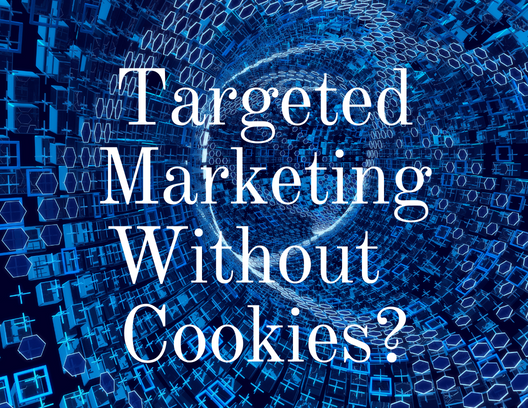%20(1).jpg?width=498&name=110708158_s%20(2)%20(1).jpg) Is QR code technology the next wave in contactless payment convenience? Many merchants are finding out that they can enable quick, convenient contactless payments through a simple scan of a QR code.
Is QR code technology the next wave in contactless payment convenience? Many merchants are finding out that they can enable quick, convenient contactless payments through a simple scan of a QR code.
Historically, the U.S. has been much slower to adopt newer digital payment methods than other economically fast-growing countries. Europe and many major Asian countries have readily adopted various new digital payment technologies such as EMV, contactless, and QR Code payments.
But here in America, contactless payments have a much different story.
While other countries embrace digital payment methods, it has literally taken a pandemic to push Americans into greater adoption. Prior to 2020, consumers and merchants alike looked at contactless payments options with disinterest. Merchants had no drive to upgrade to NFC contactless terminals. Few credit card issuers had a widespread distribution of tap-to-pay or contactless credit cards. Nor was there widespread adoption of mobile or digital wallets by consumers.
But as soon as consumers became concerned about contact with a deadly virus, contactless payments got a lot more interesting.
Consumer demand drives the growth of digital payment options.
Consumers were beginning to realize the convenience of not carrying a wallet or purse. It was novel to pop into the store with just your phone or smartwatch and be able to complete a transaction.
Banks and credit card issuers already had plans to begin to slowly distribute tap-to-pay chip enabled cards. But due to circumstances, many began flooding the market with the new contactless cards.
But it wasn’t until the pandemic that consumers really began to embrace the value of the technology.
The annual report, How We Shop - Measuring The Rapid Digital Shift, shows us just how adamant consumers are about wanting contactless payment options. The study reveals that 6 out of 10 shoppers said that stores that don’t offer digital payment options won't be getting their business. Nevermind that they're more secure.
At some point consumers will return to shopping at brick and mortar stores. Well, at least some will! But if there’s one thing we know for sure, it's that merchants must make consumers feel safe. Consumers have already indicated that they won't feel safe if there isn't an option for contactless payments.
NFC move over! There’s a new contactless payment method: QR Code contactless payments.
There are multiple ways to complete a contactless payment. You can tap-to-pay with your NFC chip-enabled credit card. Mobile and digital wallets also allow you to tap into NFC technology to complete a contactless payment. Mobile wallets are great because they allow access to contactless payments even if customers don't have a chip enabled card. But one of the newest trends is the use of QR codes to complete contactless payment transactions quickly and easily.
But what is a QR code and how are they being used for payments?
A QR code is a Quick Response code. Scanning a QR code generates a quick response that triggers an action. It could be a link to a website, or in this case, trigger a payment transaction.
One thing that makes QR codes so versatile is that they can hold a lot of information. They’re made up of a matrix of tiny squares within the larger square that makes up the code. A QR code is a lot like a crossword puzzle. It can hold information in rows both vertically and horizontally. The amount of tiny squares directly correlates with how much information the code is harboring.
QR codes aren’t just for retail businesses. QR code facilitated contactless payments really benefits a multitude of different business models. And really, QR code technology can benefit businesses in many ways, not just for payments.
How are QR codes used to facilitate payments?
That depends on the type and size of the merchant. There are two ways the use of QR codes can trigger a payment transaction. Either the customer can generate a QR code attached to their payment information, or the merchant can generate one that’s attached to their payment page.
Usually, with very large retailers and chains, the retailer will scan the customer’s QR code. For small and medium-sized businesses, the customer will scan the merchant's QR code.
Here’s how it works:
The customer will generate a QR code on their phone at the time of payment. The code is tied to the customer’s payment method of choice. It could be a credit card, an ATM card, or possibly another payment method such as PayPal.
The cashier scans the customer’s QR code with their scanner, which triggers the payment transaction to process.
For SMBs and micro businesses, it works the other way around.
The merchant creates a QR code that directs customers straight to their payment page. The merchant shows the QR code to the customer, who scans it with their phone. Reading the QR code will trigger the payment transaction with the customer's pre-selected payment source.
QR codes are a familiar sight.
QR codes are nothing new. Consumers are used to seeing them, and they are already used to scanning them.
QR codes have been used for many applications long before payments. Restaurants use QR codes for everything from pulling up the menu on your phone to generating the check. Consumers are used to scanning QR codes for loyalty programs and to trigger the download of a store’s app.
Starbucks is largely responsible for pushing QR code payments into the mainstream. The Starbucks app was one of the earliest successful employments of a QR code for payment. The app allowed customers to present a QR code (tied to a stored payment method) for payment.
Dunkin Donuts is another great example of how businesses tie QR code payments to rewards apps that also allow consumers to redeem offers and earn points.
Now, many large department stores such as Macy’s, Kohls, Walmart, and Target utilize QR technology when their customers pay through their apps. At the innovative Amazon Go stores, QR codes are used to track customers as they choose items and charge them as they walk out the door. Let's not forget how QR codes are used at Amazon Prime and Whole Foods by consumers every day. At checkout, the Amazon Prime member only needs to scan their QR code on their phone to get their 5% Amazon Prime discount.
So, in a way, consumers have already adopted QR code use in their daily lives. They've just not necessarily adopted them for contactless payments before now.
Will consumers adopt QR Code Payments?
Absolutely! They already are.
If there’s one thing we’ve learned about consumers over the years, it's that they want fast, frictionless payments. And for consumers, friction can have many faces.
Today’s consumer expects to be offered the latest in payment technology. They want to be able to pay whatever way is the most convenient for them. They also want to know that their transactions are secure without it inconveniencing them. But, since the pandemic, they're increasingly concerned with keeping their distance and coming in contact with surfaces.
As a direct result of changing consumer trends, alternative payment methods, such as tap-to-pay and QR code payments, have become more commonplace.
%20(1).jpg?width=574&name=105559667_s%20(1)%20(1).jpg) Consumers either have strong feelings or almost no feeling regarding contactless payments. As you can imagine, the younger generations are driving the digital and contactless payments movement.
Consumers either have strong feelings or almost no feeling regarding contactless payments. As you can imagine, the younger generations are driving the digital and contactless payments movement.
Consumers that have adopted and rely on contactless payments won't go back. They expect to be able to use digital payments, and they don't want to shop at merchants who don't offer the option. Shoppers will choose a store that offers contactless payment options over one that doesn't.
And believe it or not, according to the September 2020 How We Shop Report, consumers actually choose to shop at a particular merchant based on the payment options they offer. The study found that 70% of Millennials and 71% of Gen Z state that a merchant's payment options affect their willingness to shop in a store.
I’d be willing to bet that hadn't crossed most merchant’s minds.
QR code vs NFC - Is this better, safer, or more convenient?
With QR codes, any customer with a smartphone could make a contactless payment, regardless of whether they have a contactless chip enabled card.
Of course, any customer with a smartphone can tap-to-pay with their mobile wallet. Also, regardless of whether they have a contactless credit card.
However, it's important to point out that not all phones are equipped with NFC technology. Less expensive phone models do not have NFC built into the phone. But any phone with a camera can scan a QR code. This makes the payment option more accessible to a wider range of customers.
NFC only works if merchants have upgraded to EMV compliant, NFC capable payment terminals. But as of last year, almost half of all merchants had not yet upgraded to NFC compatible terminals. On top of that, many that do have them, do not have the technology enabled. This has only fed consumers slow adoption. Availability is not guaranteed, and consumers don't like to try things they're not sure will work.
Historically micro and small-businesses have remained mainly cash-based. They often found it too expensive to buy POS systems or EMV/NFC payment terminals. QR codes payments are more accessible to more merchants and more consumers. That is because they are easier and less costly to implement.
QR code payments have made it possible for these merchants to enter the digital age.
There’s no expensive equipment to buy. QR codes can be read by the barcode scanners that most merchants already have and use every day to ring up products. Merchants only need to make a call to their merchant services provider to have the functionality integrated.
Most smartphones can now generate QR codes. This allows small business owners to accept QR code payments without any special equipment.
There are proper situations for both methods of digital payments. And both methods of contactless payments can coexist side by side in the payments environment. And they should. Consumers tend to prefer one over the other. Merchants who offer both appeal to more customers by offering their preferred payment method.
And for the most part that is what is really appealing about it. QR code payments are easy and inexpensive to get started. More merchants are able to offer digital payment options to their customers. And more customers are able to take advantage of digital and contactless payment options with the use of QR codes.
Both NFC and QR payments are convenient, just in different ways.
NFC stands for near field communication, which uses radio frequency technology to allow two items to communicate. So, NFC, as its name implies, works within proximity. The customer only needs to place their phone “near” the terminal for it to connect. It doesn't need to be precise, or aimed, or angled in any certain way to work.
But it does have to be close. In addition, NFC, considered a contactless payment, still may require some form of contact. It depends on the type of card the customer is using to tap-to-pay. Many ATM cards and credit cards require a PIN code to authorize. When a customer uses NFC to tap-to-pay, they still must enter a PIN code or sometimes a signature is required. They are not always totally contactless.
QR code digital payments, on the other hand, require no PIN and no signature. Consumers just scan, confirm, and go. However, QR codes require more precise placement than an NFC transaction. The customer must aim their camera precisely on the QR code within the corner markers for the camera to read the code. But they can be read from further away.
This could cause extra friction at checkout. Something both the consumer and the merchant want to avoid at all costs.
Downside of QR code payments for brick and mortar merchants.
If there’s one downside to accepting QR payments, it's that accepting payments this way makes it a card-not-present transaction. So even though the customer is standing there, and they've tied their payment information to their QR code, it is treated as card-not-present.
Brick and mortar merchants enjoy the luxury of slightly lower processing rates specifically because it is a card-present transaction. Card-not-present transactions, such as with eCommerce, are subject to higher interchange rates. This will undoubtedly lead to higher overall processing charges for merchants.
However, this technology could save merchants from the expense of upgrading to NFC compatible terminals. And this could make keeping up with the latest technology in the eyes of their customers easier. Which is of great benefit to small and micro-business owners whose margins are tight, but want to remain relevant.
But merchants must weigh the long-term costs of processing payments as if they are card-not-present transactions. Many times, the ongoing costs of higher processing rates will greatly outweigh the onetime cost of a new NFC terminal.
At the end of the day, QR code payments could make contactless payments more accessible for merchants and consumers of all types. And that could prove to be priceless.
There is an undeniable future for QR code contactless payments in the U.S. and beyond.
%20(2).jpg?width=533&name=119057791_s%20(4)%20(2).jpg) EMVCo, the creator and governing body for EMV technology, has been planning for the future. They created QR code standards in 2018. QR codes offer a cost-effective alternative to NFC payments for merchants. And they offer contactless payments for a wider range of consumers. They understood this.
EMVCo, the creator and governing body for EMV technology, has been planning for the future. They created QR code standards in 2018. QR codes offer a cost-effective alternative to NFC payments for merchants. And they offer contactless payments for a wider range of consumers. They understood this.
QR code usage is widespread in China, Japan, and India, accounting for trillions of dollars of transactions. India, one of the fastest growing ecommerce markets, built its own QR code payment wallet, Paytm.
While the U.S. has historically been slow to adopt new payment technology, the Coronavirus has accelerated the use of contactless payments.
Merchants that already offer contactless payment options are seeing them used more often. Merchants that don't, will need to up their game. Consumers expect merchants to accept all the most innovative payment methods.
Grow your market reach with QR code payments.
By adding QR code payments, you can offer multiple payment options that can also be used in multiple ways.
QR payment options can really help you transform your business into more of an omnichannel experience for the customer. Scanning a QR code for purchase can happen in person in your store, but it can also happen anywhere you need it. QR code payment technology can be used anywhere customers are engaging with you. Meaning they work within your social media outlets and your email campaigns. This allows customers to buy from you wherever they are and however they’re interacting with you.
MonerePay is your source for cutting edge solutions at transparent prices.
Merchants must adapt their businesses based on customer demand. And in a post-COVID-19 market, customers will demand more contactless payment options and a carefree checkout experience.
At MonerePay, we’re dedicated to bringing the most groundbreaking solutions the industry has to offer to our clients. Each of our payment advisors holds ETA-CPP certification. We have the experience, education, and expertise to recommend the best solution for your business needs. And we tailor our solutions to the specific needs of each client.
If you're ready to add QR code payments to your suite of payment options for your customers, call us today. It's time you discover what it means to be a part of the MonerePay Family.

(1).jpg)
.jpg?width=533&name=Copy%20of%20102932077_s%20(1).jpg)
.jpg?width=540&name=135441784_s%20(1).jpg)

.jpg)

